Tom's Guide Verdict
With the Nama Juicer, the hype is well-deserved. A more compact version of the J2, the J3 Cold Press is just as capable and user-friendly as its predecessor, but you'll need to top it up mid-juice to make large batches.
Pros
- +
More compact design than its predecessor
- +
Relatively easy to clean
- +
Thoughtfully and sustainably packaged
- +
Powerful cold press juicing
- +
Two strainer options for different pulp levels
- +
Makes great nut milk
Cons
- -
Needs tipping to get all the juice out
- -
Requires topping up for larger batches
- -
Pricey
Why you can trust Tom's Guide
Price: $450
Height: 15 inches
Weight: 9lbs
Juice yield: 16oz
RPM: 50 rpm
Warranty: 15 years
Things don't often change in the world of juicers. These machines are unavoidably expensive, fiddly to assemble and they guzzle up enough fresh produce to put a serious dent in your weekly food budget. Although the Nama J3 doesn't change any of that, it's also the best juicer I've tried. User-friendly and immensely capable, if there were ever a cold press juicer to convert me to regular juicing, this would be it.
I've tested over a dozen juicers over the years, but truthfully, I've yet to add one to my regular rotation of kitchen appliances. Although there are numerous health benefits to adding freshly squeezed juice to your diet, the juice just hasn't felt worth the squeeze for the amount of effort that goes into prepping ingredients, assembling the juicer and cleaning the pulp left after I'm done.
The Nama J3 isn't completely fuss-free, but it goes a long way in making the juicing process user-friendly, and most importantly, you're still left with a fantastic glass of juice when you're done.
Nama J3: Price and availability
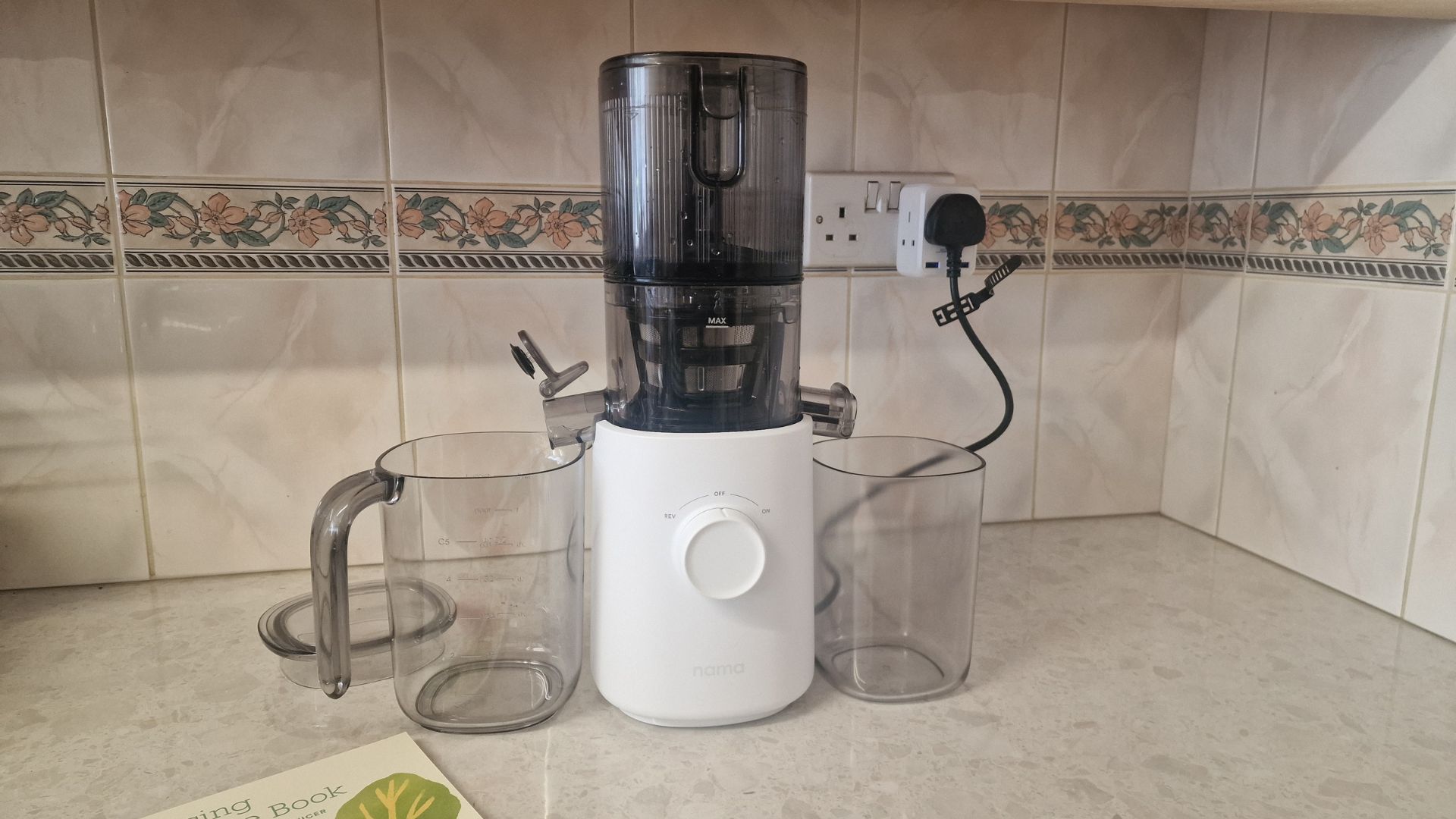
The Nama J3 features the same juicing mechanisms as the Nama J2 juicer, but in a more compact frame. It's a bit cheaper, too, at $450 compared to the J2's $550. It's by no means affordable, but it's comparable to most leading cold press juicers on the market. The Hurom H-AA will set you back $399, and the Kuvings Whole Slow as much as $699.
Nama J3: Design
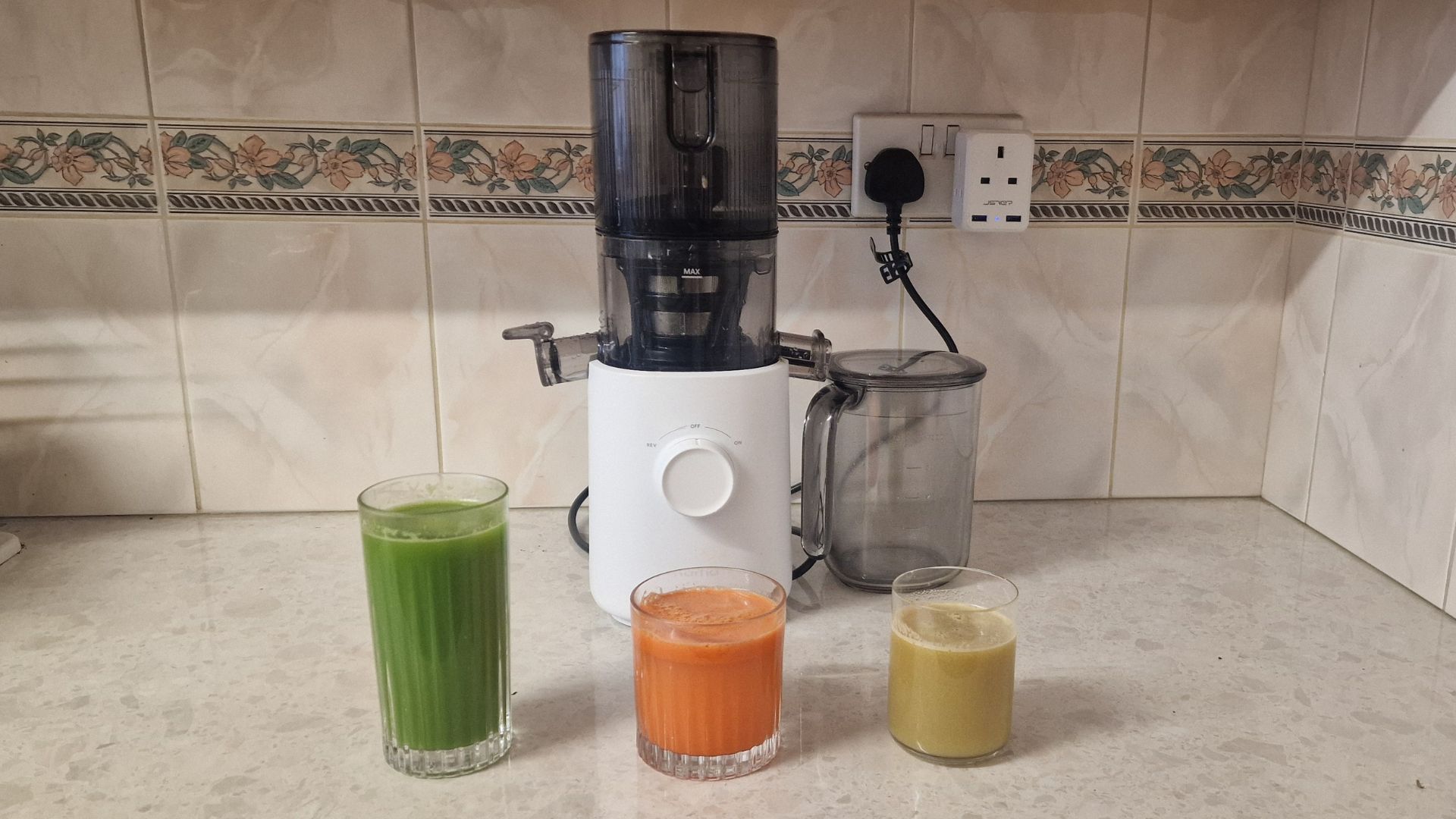
Upon assembly alone, it's easy to see that a lot of thought has gone into the design of the Nama J3. It came securely and sustainably packaged with each major component in a cardboard box and dust bag. There's also a handy recipe book with guidance for Nama's signature leave-and-go approach, which allows you to add all your ingredients to the top chamber of the juicer, switch it on and go about your business while it processes your produce.
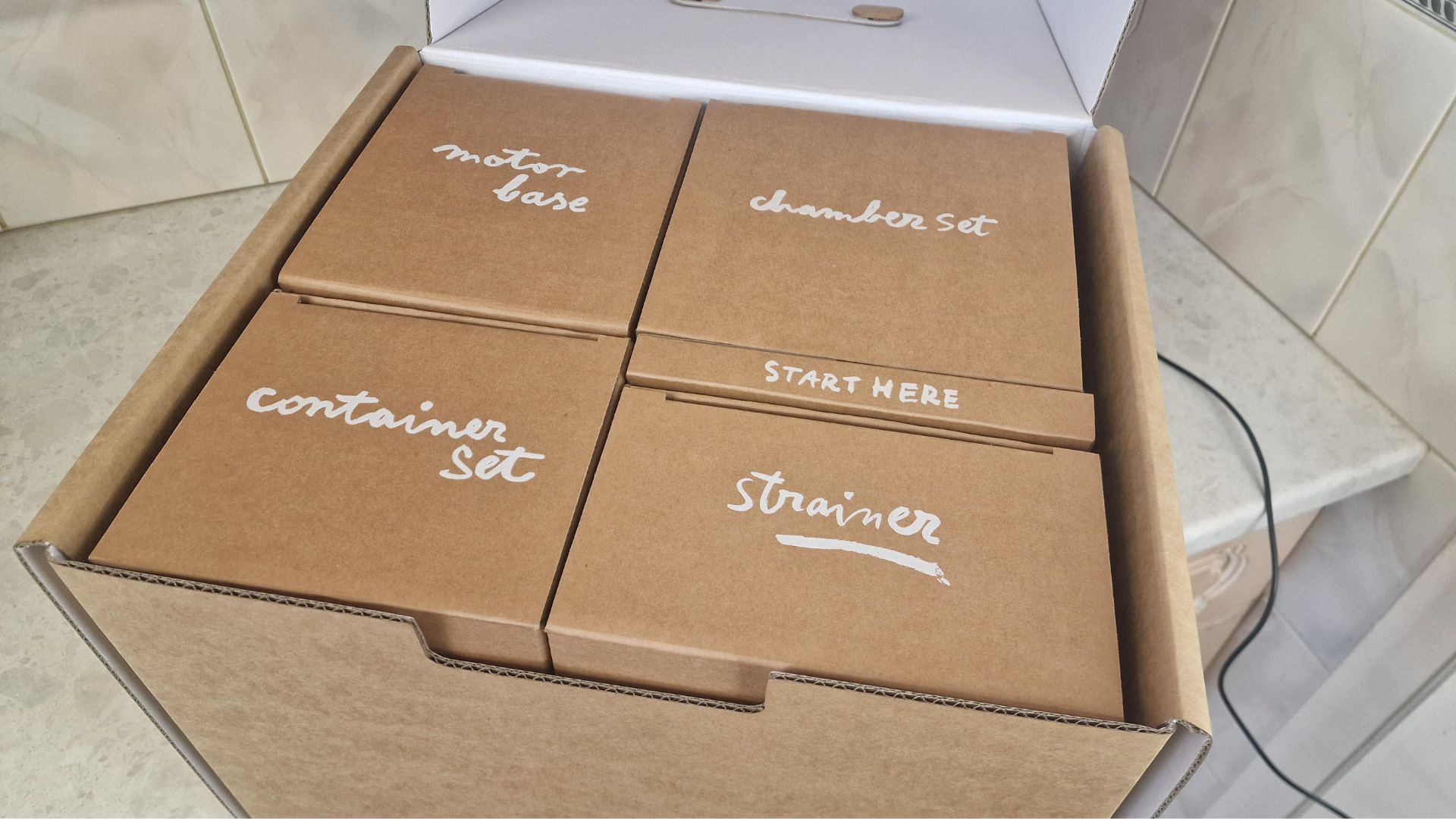
The main components of the Nama J3 are a spinning brush, a juice strainer and an auger. These slot together very easily, and you can swap out your juice strainer for a larger one which allows more pulp to be extracted — great for getting your fiber in.
Once this is slotted onto the motor base you can then twist the chamber into place. This locks securely, but there's a knack to unlocking it again.
Nama J3: Juicing performance
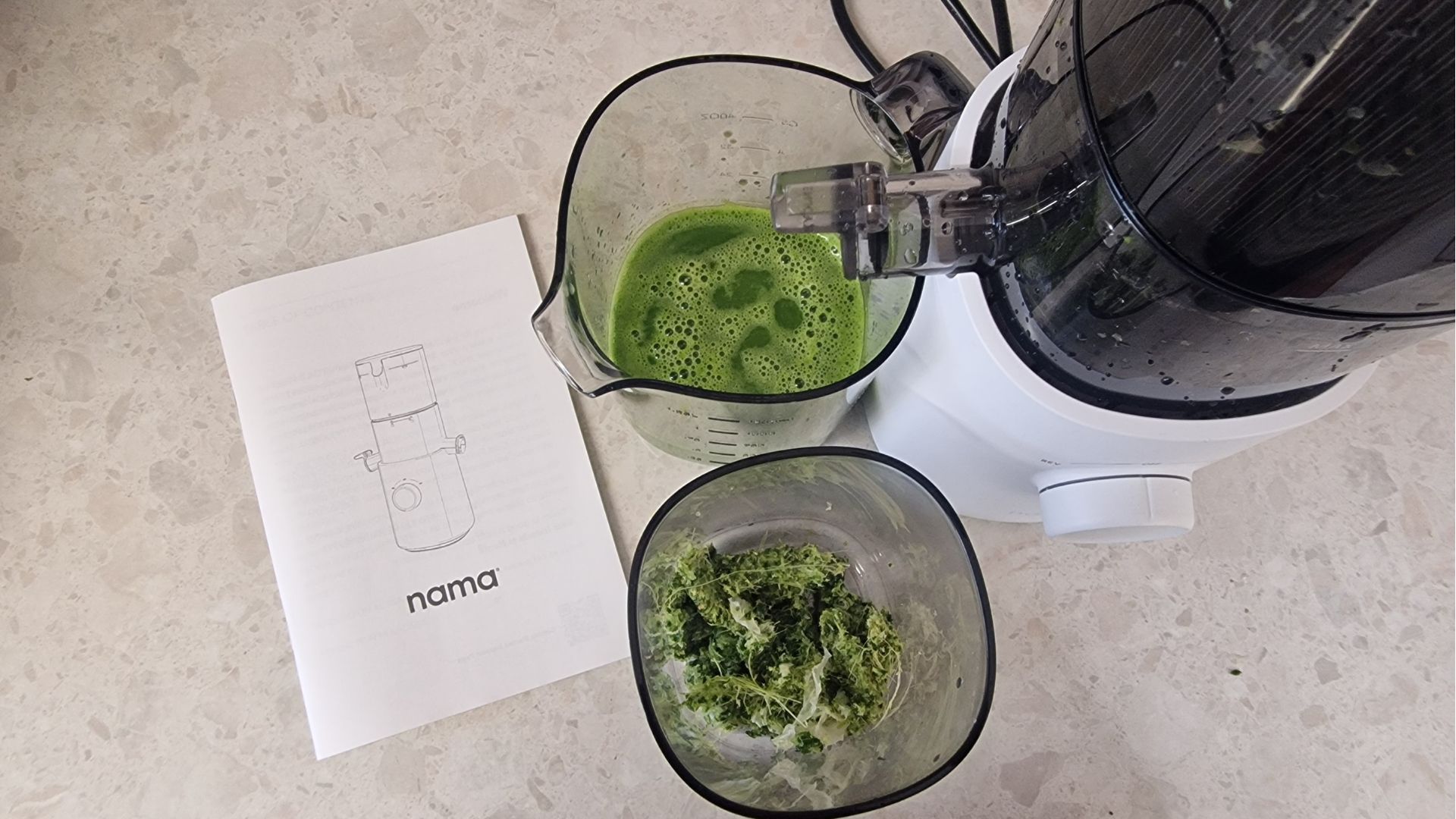
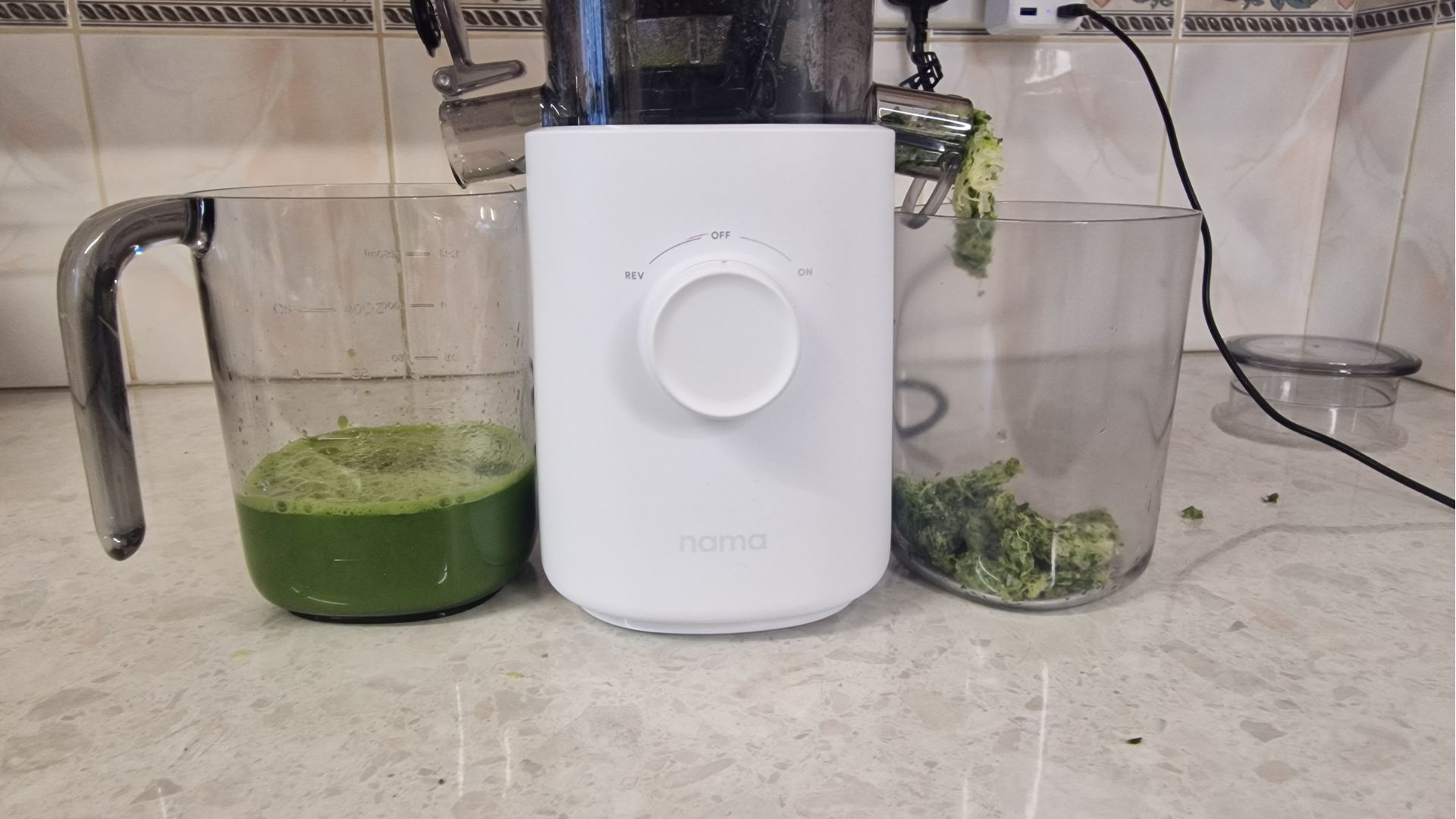
The first juice I made with the Nama J3 was the 'Vancouver Island Green' juice, which includes kale, lemon, cucumber, ginger and celery. Nama lists all of its recipes in the order they should go into your juicer. Ideally you should stack your ingredients with the heaviest ingredients at the top, as the weight of these ingredients will push lighter ingredients such as kale down and into the juicing mechanism.
I was struck by how quiet this jucier is, and while it's a cold press, it's relatively fast. I had a glass of juice in around two minutes.
I was struck by how quiet this jucier is, and while it's a cold press, it's relatively fast. I had a glass of juice in around two minutes, and was left with relatively dry pulp, too. The taste was, frankly, a bit vile. In an attempt to feel like a fitness influencer, I had it before my morning coffee, and found the total lack of sweetness combined with the spice of the ginger a little too overwhelming. Going forward I'd throw an apple into the mix to make the green juice a bit more drinkable, but Nama does specify that this is a low-sugar and nutrient-dense juice, so if you've got a stronger stomach than me, you'll likely see some benefits from adding this mix to your morning routine.
After disassembling and rinsing the juicer I started a different recipe. Described as 'complex' and 'invigorating', the Sunshine State of Mind drink featured grapefruit, cucumber, apple and ginger. I peeled the grapefruit before adding it to the juicer, and cored the apples. Some slow juicers struggle to process ingredients that still have their skin or seeds, and historically I've had to do a lot of prep cutting produce down to a digestible size before feeding it to a slow juicer. It's a tiresome process, so the ability to throw in my grapefruit and apple without too much prep was refreshing — and that's before I got to the juice.
I was left with a layer of pulp when this juice was finished, but once I had stirred it in the mix was very drinkable — zingy and fresh with some needed sweetness from my apple.
As a final test of just how capable this juicer was, I decided to make some carrot juice. According to the recipe book, carrot juice is a great sauce of beta-carotene, which contains lots of vitamin A. They're also a lot of effort to chomp through though, so getting those vitamins in juice form is a big win as far as I'm concerned. Combining the rest of my grapefruit and some ginger for good measure, I was left with a really fresh and tasty juice and some very dry pulp. No juice wasted here.
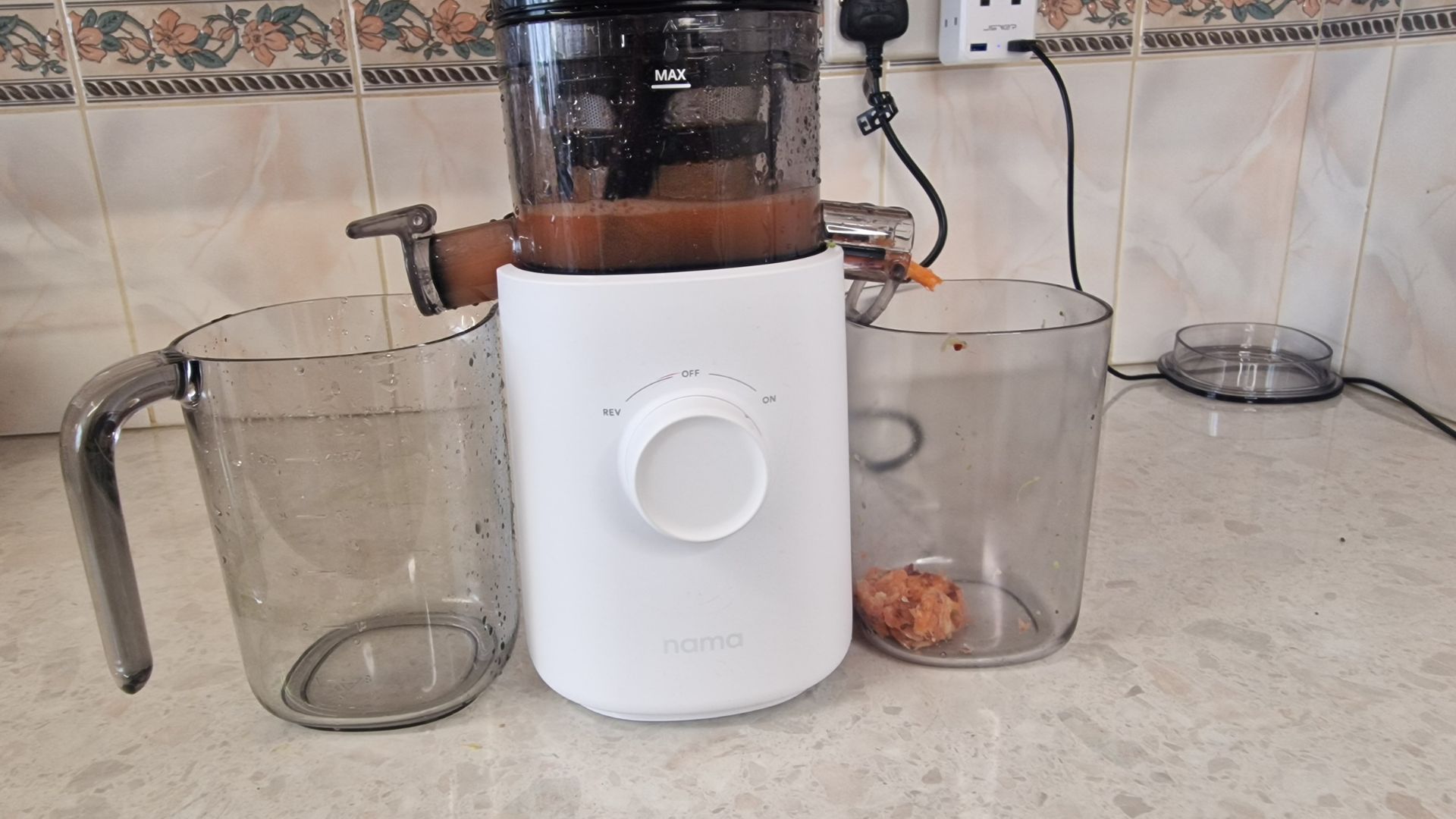
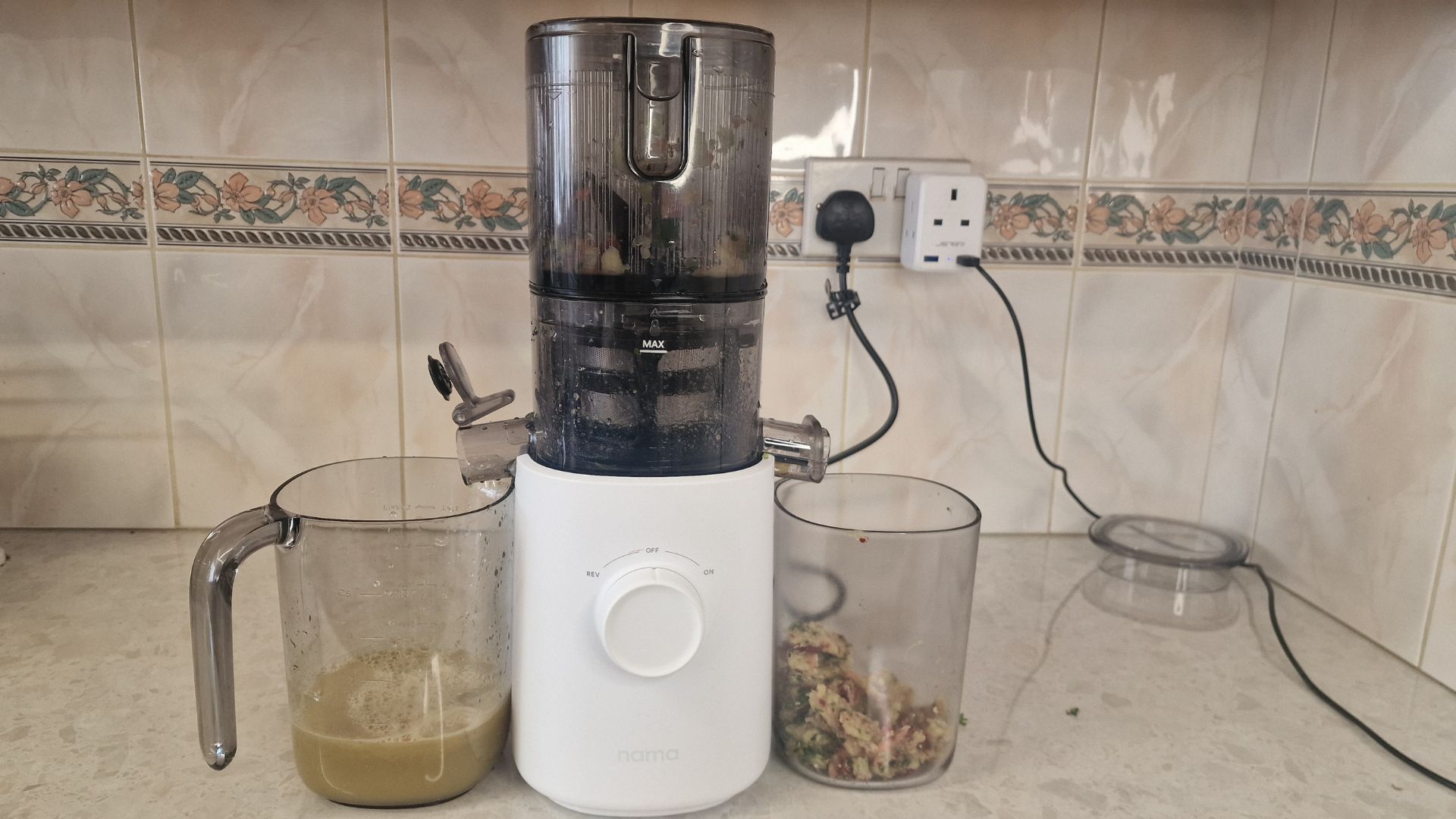
Nama J3: Making nut milk
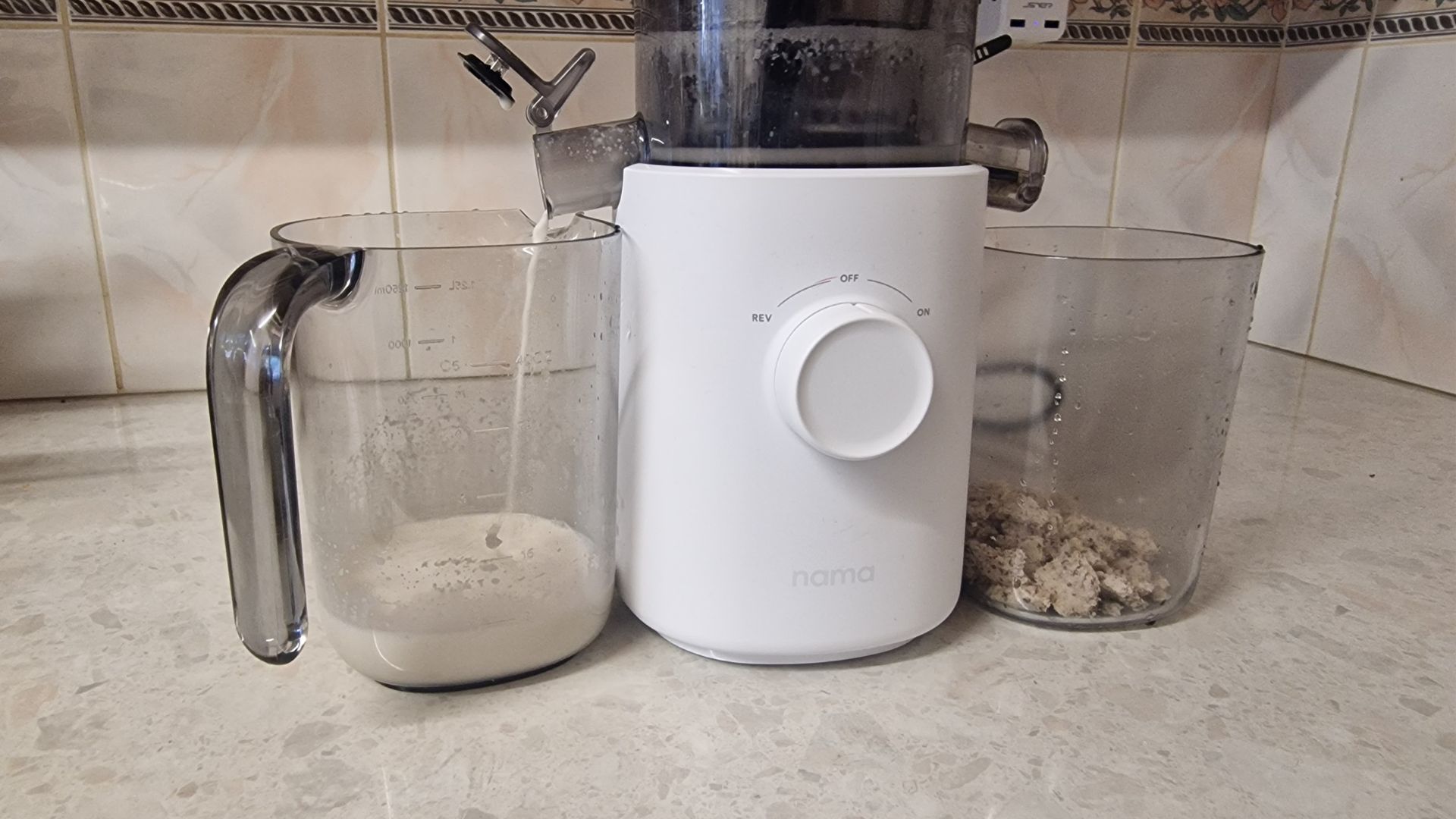
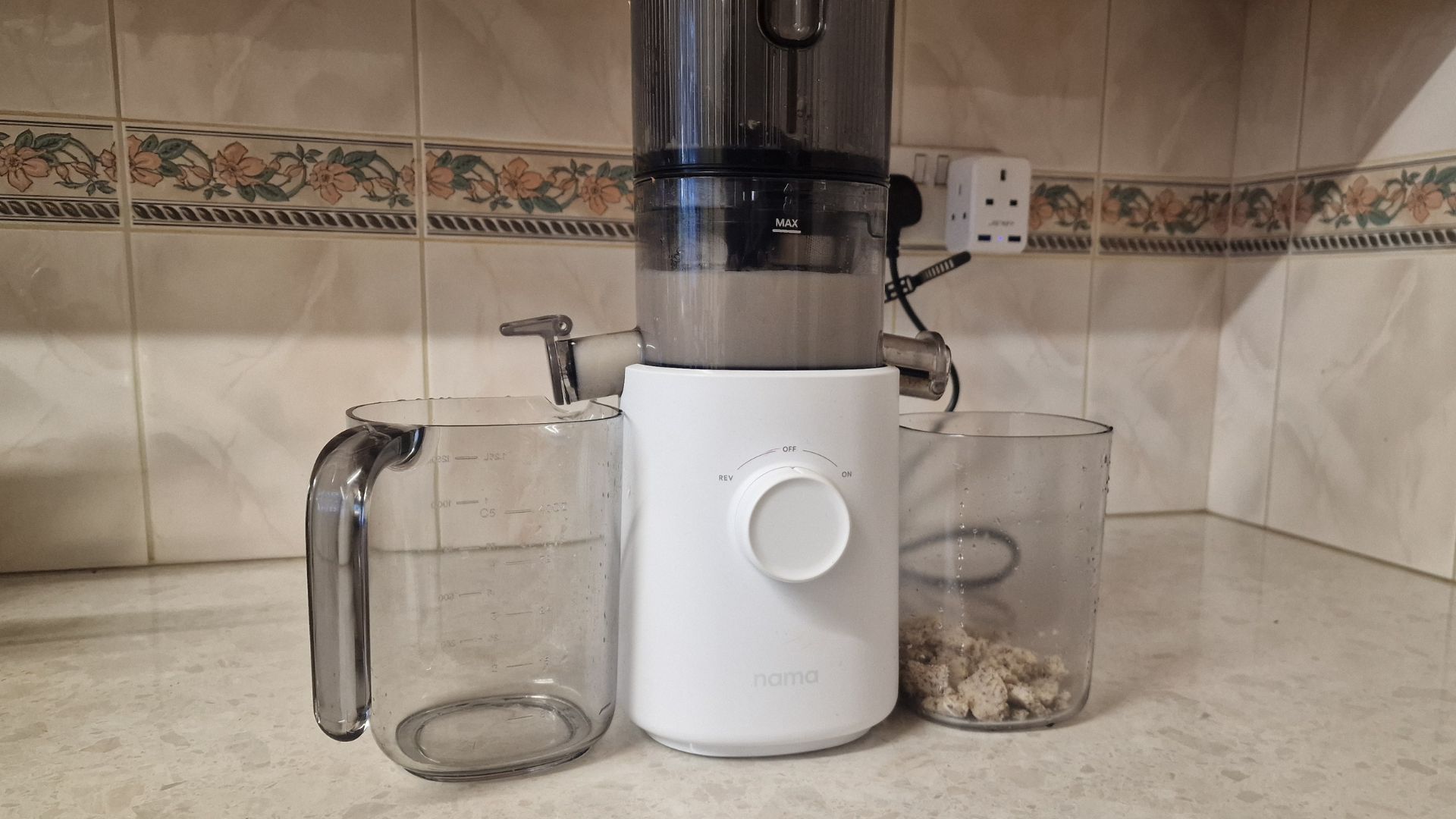
I also made nut milk in the Nama J3. I regularly drink almond milk and hazelnut milk but I've long been skeptical of just how good homemade nut milks can be compared to the store-bought options. I soaked some hazelnuts overnight to rehydrate them and then fed them slowly through the juicer along with a little water to create a milk.
Unlike the Nama J2, there's no hole in the lid of the Nama J3 to allow you to feed in more ingredients while juicing. This means you need to stop the juicer, unclip the lid and add more ingredients before closing the lid and twisting the dial again to activate once more. This makes things a little more tricky if you need to add things like nuts little and often, because the juicer won't run unless the lid is in place. Still, I only had to do this a couple of times and I was left with a really creamy hazelnut milk at the end.
After mixing in some maple syrup for sweetness I ambitiously tried to steam this using my espresso machine, and I was wowed by the luxuriously thick texture I was able to achieve. There was a bit of grit at the bottom of my mug, but it's nothing a strainer couldn't handle.
Nama J3: Cleaning
With so many parts to disassemble and scrub clean of pulp and fiber, those who know how to clean a juicer will understand that it can be a long-winded process.
For the most part, the Nama J3 makes the cleaning process pretty easy. You'll need to scrub the filter to remove small fibers that have become lodged from juicing, but a good rinse was sufficient enough to clean most of the removable parts. There were a couple of places that required a bit of attention: a rim on the underside of the auger where some residue became lodged, and the last bits of fiber that weren't quite pushed out of the spout outlet.
For a deep clean, Nama recommends soaking the components in equal parts of warm water and vinegar overnight before drying thoroughly and leaving out to fully dry.
Should you buy the Nama J3?
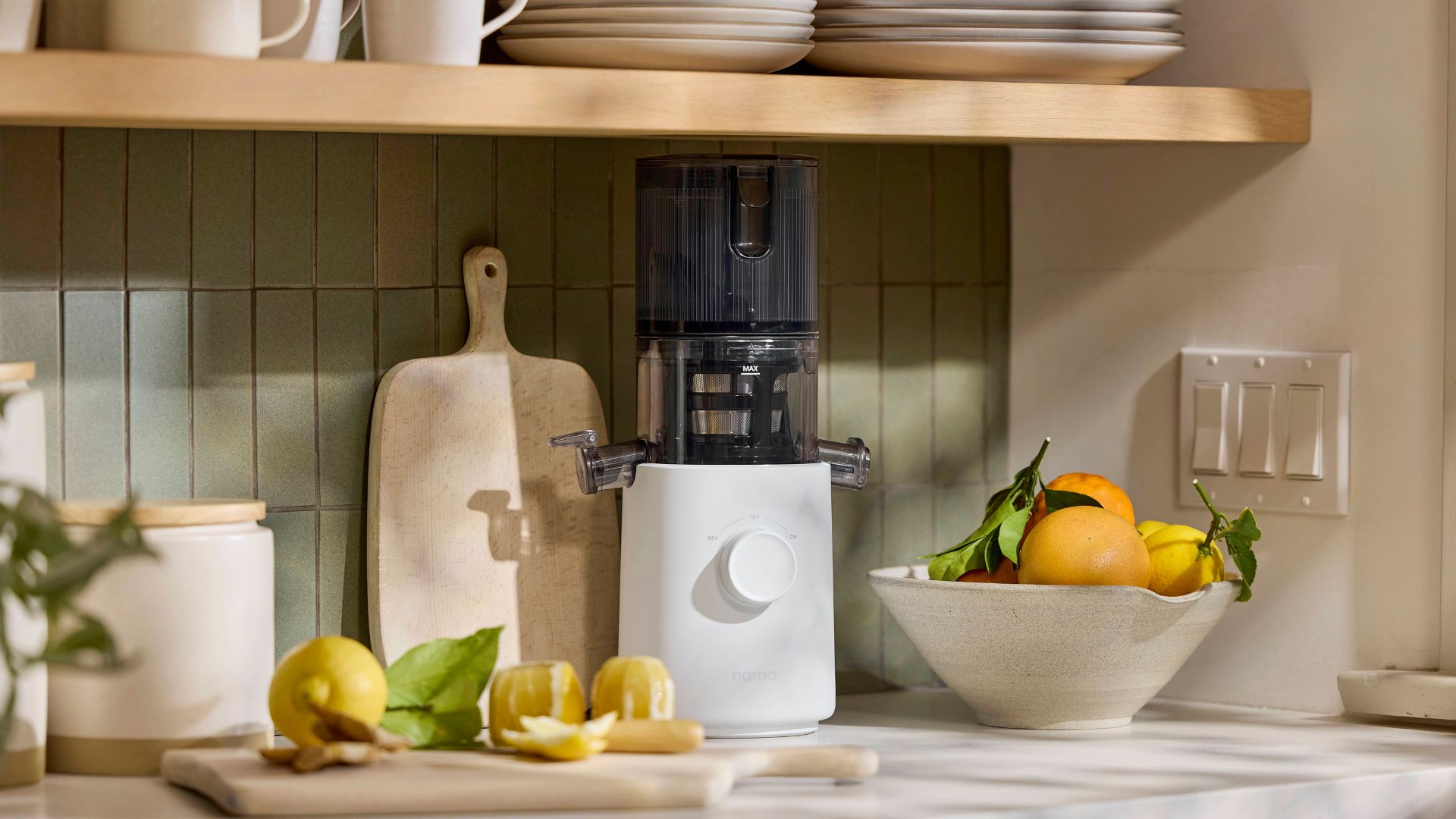
Although it's described by Nama as a portable juicer, the Nama J3 is still a hefty option. However, its more compact dimensions are well-suited to sitting under kitchen cabinets or being stored away when not in use.
What impressed me most about this juicer was the nut milk I was able to make it. Unlike many juicers I've tried, it was able to create creamy and rich milk without much effort. Its performance for juicing is top-tier, with very little moisture wasted in the pulp it extracted, and a surprisingly low level of froth or grittiness for a cold-press juicer.
There are more affordable juicers on the market, including the Cuisinart Easy Clean Slow Juicer which costs just over $100, but if you're willing to pay for a smooth and enjoyable juicing experience, you can't go wrong with the Nama J3.

Millie is the Senior Home Editor at Tom's Guide. She's been reviewing home tech for over five years, testing everything from coffee makers to the latest vacuum cleaners. Starting out in 2019 as a Staff Writer at TopTenReviews, Millie then moved on to Future's Homes portfolio, where she eventually oversaw all product testing as Head of Reviews.
With particular expertise in cookware and kitchen appliances, you'll struggle to find an air fryer Millie's not tested. She's traveled the world reporting on the latest home innovations and product launches, learning how to use pizza ovens from Pizzaiolos in Naples, and touring the De'Longhi factory in Venice.
When she's not reporting on home and appliance trends, Millie loves watching live music. She's currently learning the guitar - naturally, she plays a Fender.
